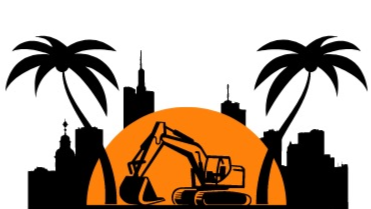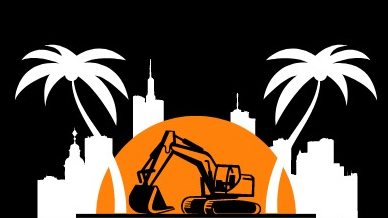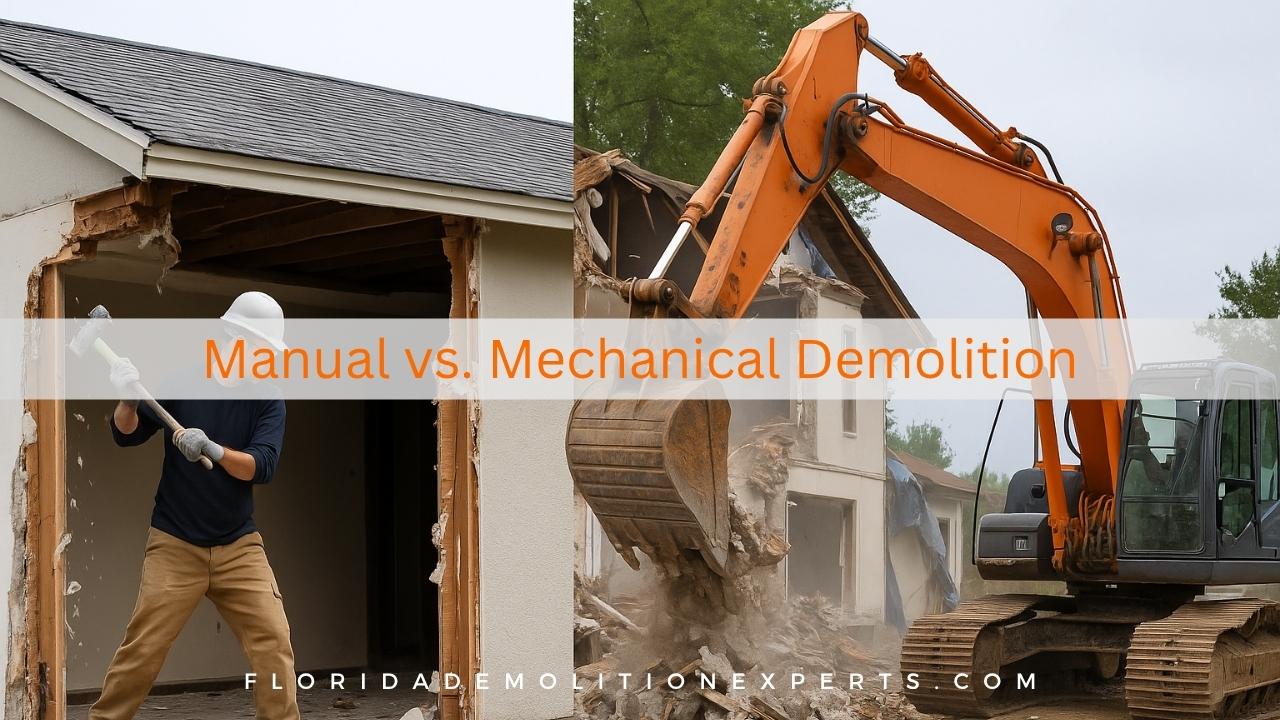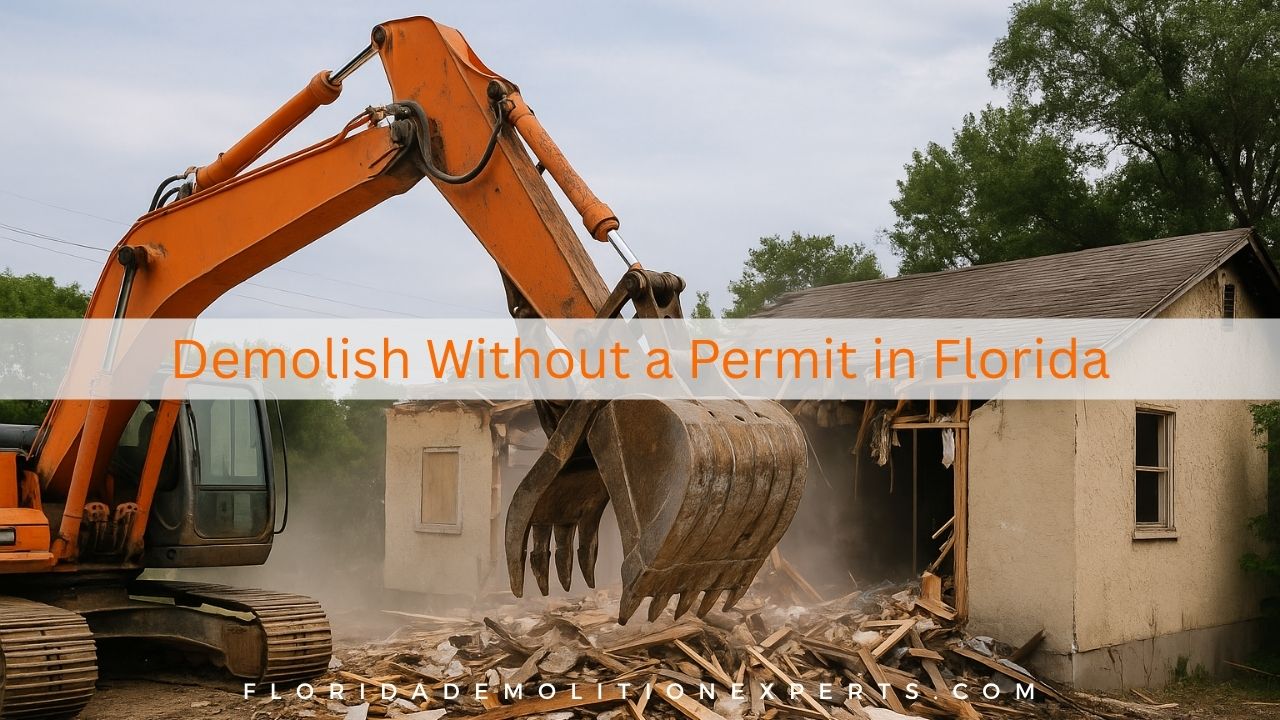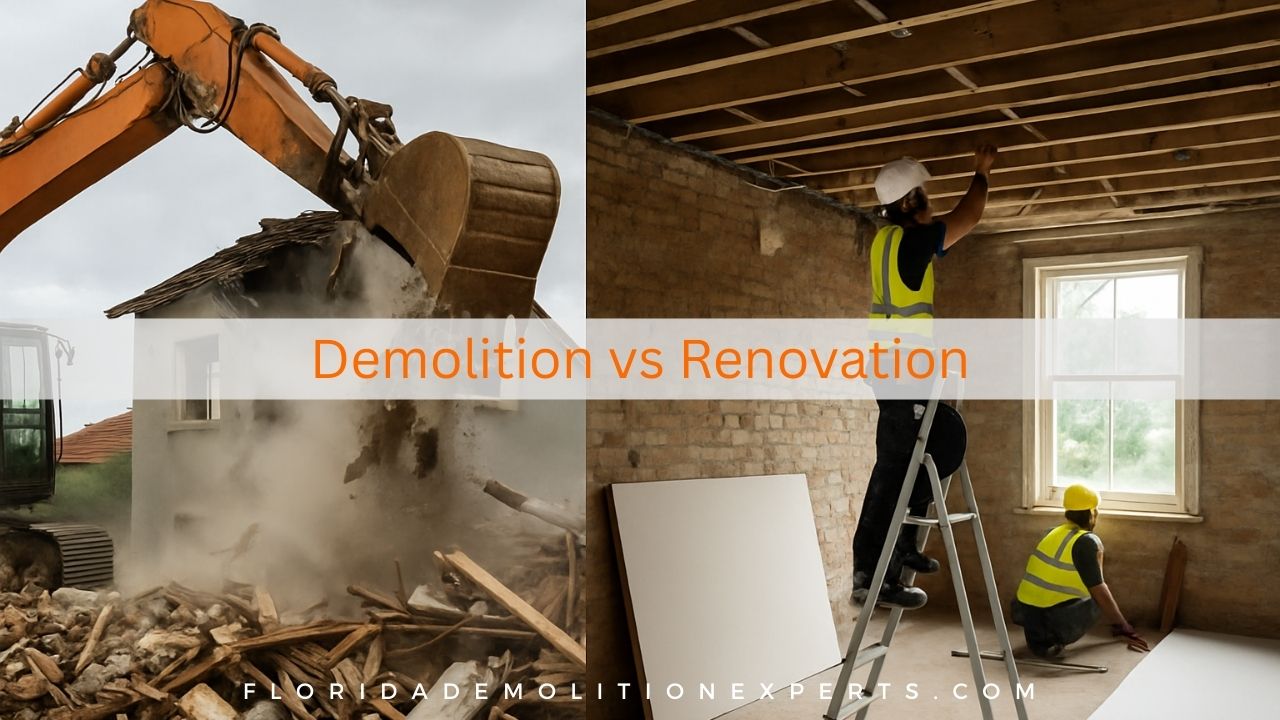Tearing down a house isn’t just about smashing walls; it’s a strategic decision. If you’re planning to demolish a home in Florida, you’re likely wondering:
Should I choose manual demolition or go with mechanical demolition?
Each method has specific advantages, costs, risks, and legal considerations, especially with Florida’s strict permitting and environmental regulations.
Here’s an expert breakdown to help you make the right choice based on your property, timeline, budget, and local code.
Manual vs. Mechanical Demolition
Discover which demolition method suits your Florida home: manual for precision, or mechanical for speed and scale.
What Is Manual Demolition?
Manual demolition uses hand tools like crowbars, hammers, and saws to dismantle a structure piece by piece, carefully. It’s ideal for partial teardowns, salvage projects, and tight urban sites.
Learn more about this method on our Residential Demolition in Florida guide.
When Manual Demolition Makes Sense:
-
You’re renovating part of the home (like the garage or kitchen).
-
The house has asbestos or lead that needs careful handling.
-
It’s a tight urban lot where heavy machinery can’t operate.
-
You aim to salvage valuable materials (doors, wood, fixtures).
-
The structure is historically protected or requires soft dismantling.
What Is Mechanical Demolition?
Mechanical demolition involves heavy-duty machinery such as bulldozers, excavators, and loaders to tear down structures quickly. This method is commonly used for full demolitions and storm-damaged homes.
For more insights, see our Types of Demolition Methods guide.
When Mechanical Demolition Makes Sense:
-
You need to remove the entire structure quickly.
-
The building is unsafe, unstable, or condemned.
-
You’re working on a tight schedule and budget.
-
The site has open access for large machinery.
-
You’re not concerned about salvaging materials.
Comparison: Manual vs. Mechanical Demolition
| Feature | Manual Demolition | Mechanical Demolition |
|---|---|---|
| Speed | Slow (Days to Weeks) | Fast (Hours to 2–3 Days) |
| Cost | Higher (Labor Intensive) | Lower (Faster Completion) |
| Precision | High | Low |
| Material Salvage | Excellent | Minimal |
| Noise & Dust | Lower | Higher |
| Ideal For | Renovations, Tight Spaces, Historic Homes | Full Teardowns, Unsafe Buildings |
| Permit Complexity | Higher (Asbestos/Lead Protocols) | Standard |
Florida-Specific Considerations
- Historic Zones: Manual demolition may be required for properties in cities like St. Augustine or Key West.
- Storm Damage: Mechanical demolition is often covered by insurance for hurricane-damaged homes.
- Permit Requirements: Each method must comply with Florida building codes and may require environmental testing.
When to Choose Manual or Mechanical
Choose Manual Demolition if:
- You only need partial removal or renovation
- You want to preserve valuable materials
- You’re dealing with a historic or fragile structure
Choose Mechanical Demolition if:
- You need the home removed quickly
- The property is unsafe or structurally unstable
- You’re preparing the site for new construction
Avoid These Common Mistakes
- Don’t overlook permit requirements, especially for manual demo.
- Never skip hazardous material inspections (e.g., asbestos).
- Don’t base your decision solely on the price factor; consider safety, salvage, and future plans.
Get Expert Help from Florida Demolition Experts
At Florida Demolition Experts, we handle permits, inspections, environmental clearances, and demolition.
We specialize in both residential demolition and emergency demolitions, ensuring your project is handled quickly, safely, and legally.

